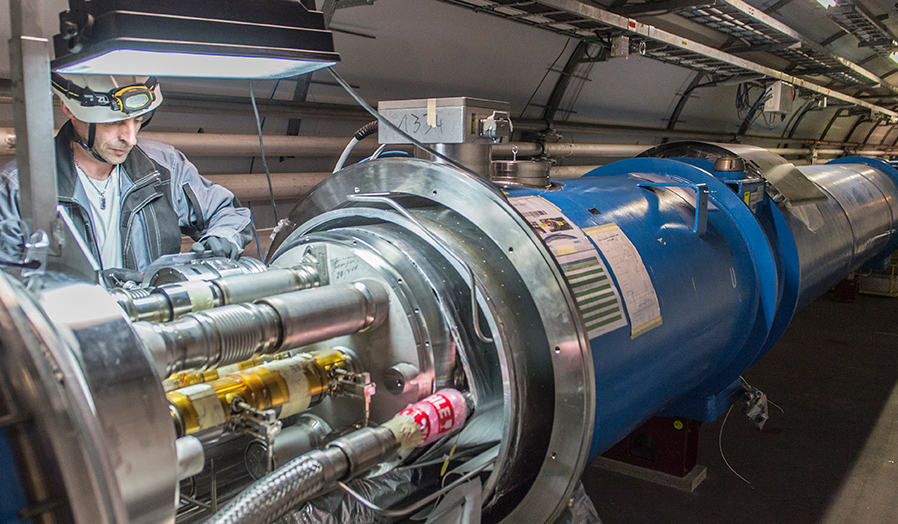 On 3 December, the operators of the CERN Control Center turned off the beams of the Large Hadron Collider (LHC). After four years of intense activity that led the proton beams to collide at an energy of 13 TeV, LHC has produced a very rich collection of data, which has allowed physicists to begin to outline a very accurate picture of the Higgs boson and, for the first time, to define many details and behaviours that are still little known of the other particles of the Standard Model. LHC, as scheduled, has interrupted data acquisition for a long two-year break (LS2, Long Shutdown 2), during which physicists, technicians and engineers will be engaged in a substantial modernisation process of the most powerful accelerator in the world and of all its big experiments: ATLAS, CMS, ALICE and LHCb. The entire accelerator and experiment complex will be upgraded and updated for the next LHC Run, partially bringing forward the future LHC High Luminosity (Hi-Lumi or HL-LHC) project, which will see the light and start collecting data after 2025. In particular: the injectors that produce the proton beams for the LHC will be renovated; the first linear accelerator of the acceleration chain will be replaced by the brand new Linac4, which will produce brighter beams; the second accelerator in the chain, the Proton Synchrotron Booster, will be equipped with a completely new injection and acceleration system; the Super Proton Synchrotron (SPS), the last injector before LHC, will have a new radiofrequency system; the transfer lines will be improved. During the stop, one of the protective elements of the LHC magnets will also be modified, thus increasing the magnetic field and with it the machine’s energy, reaching a new record: 7 TeV per beam, 14 TeV in the centre of the mass of collisions. At the same level, all the experiments at LHC will work to update important parts of their detectors to optimize their performances in view of the next LHC run.
On 3 December, the operators of the CERN Control Center turned off the beams of the Large Hadron Collider (LHC). After four years of intense activity that led the proton beams to collide at an energy of 13 TeV, LHC has produced a very rich collection of data, which has allowed physicists to begin to outline a very accurate picture of the Higgs boson and, for the first time, to define many details and behaviours that are still little known of the other particles of the Standard Model. LHC, as scheduled, has interrupted data acquisition for a long two-year break (LS2, Long Shutdown 2), during which physicists, technicians and engineers will be engaged in a substantial modernisation process of the most powerful accelerator in the world and of all its big experiments: ATLAS, CMS, ALICE and LHCb. The entire accelerator and experiment complex will be upgraded and updated for the next LHC Run, partially bringing forward the future LHC High Luminosity (Hi-Lumi or HL-LHC) project, which will see the light and start collecting data after 2025. In particular: the injectors that produce the proton beams for the LHC will be renovated; the first linear accelerator of the acceleration chain will be replaced by the brand new Linac4, which will produce brighter beams; the second accelerator in the chain, the Proton Synchrotron Booster, will be equipped with a completely new injection and acceleration system; the Super Proton Synchrotron (SPS), the last injector before LHC, will have a new radiofrequency system; the transfer lines will be improved. During the stop, one of the protective elements of the LHC magnets will also be modified, thus increasing the magnetic field and with it the machine’s energy, reaching a new record: 7 TeV per beam, 14 TeV in the centre of the mass of collisions. At the same level, all the experiments at LHC will work to update important parts of their detectors to optimize their performances in view of the next LHC run.





